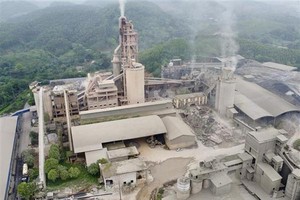Nearly 30 hydropower plants are scheduled to be built along the Mekong River within the next few years, which will not only upturn the lives of tens of millions of local residents but also prove to be disastrous for the eco-system and a serious threat to water resources and future food security.

This was the deduction of domestic and foreign scientists present at a seminar titled ‘Mekong and Hydropower’, organized by Vietnam Union of Science and Technology (VUSTA) and Vietnam River Association(VRA) in Ho Chi Minh City on August 14.
Dr. Dao Trong Tu from VRA said that China is leading in the construction of hydropower plants along the upper reaches of the Mekong River with five plants, and another eight to 15 plants coming up in the next few years.
There is heightened fear of 12 plants scheduled to be built along the lower sections of the Mekong River in Lao, Thailand, Cambodia and Vietnam.
Of these, 11 larger hydropower dams are expected to block the main stream of the river at its lower reaches. This will cause irreversible damage to the ecology of the area, threaten food and water security for tens of millions of residents--who are mainly dependant on earning their livelihood from the river’s natural resources.
Nguyen Huu Thien, an independent expert studying fish species in the Mekong River, said the river valley has about 1,200 species of fish which will be destroyed with the construction of the dam.
More than 550,000-880,000 tons of aquatic life will be totally destroyed in a year’s time, cultivation will be difficult without silt deposits and landslides and flooding will worsen.
Destruction of seafood is estimated to reach US$500 million a year, and agricultural damage will touch $25 million a year, with 54 percent of farming land along the river expected to be lost forever.
Should these 12 hydropower plants be built, then Vietnam will have to suffer serious loss to its economy and the rich diversity and cultural life along the Delta will be a thing of the past.
























